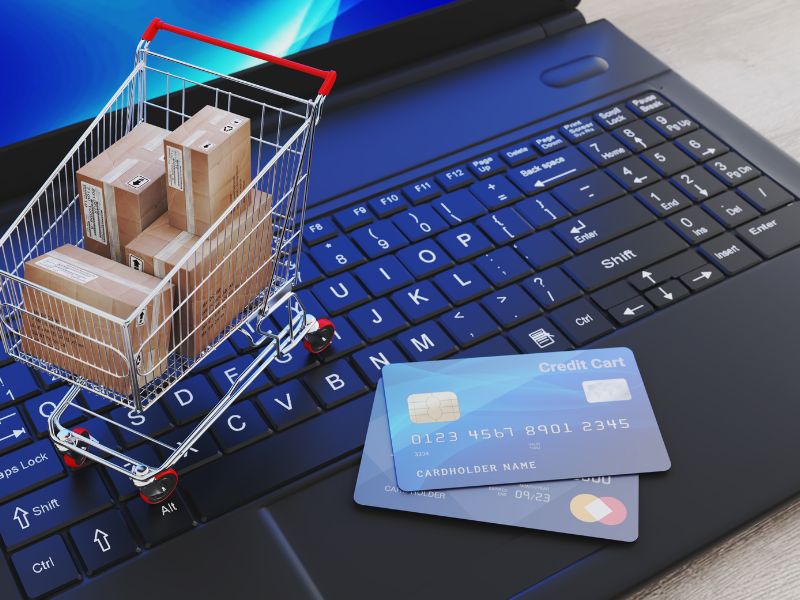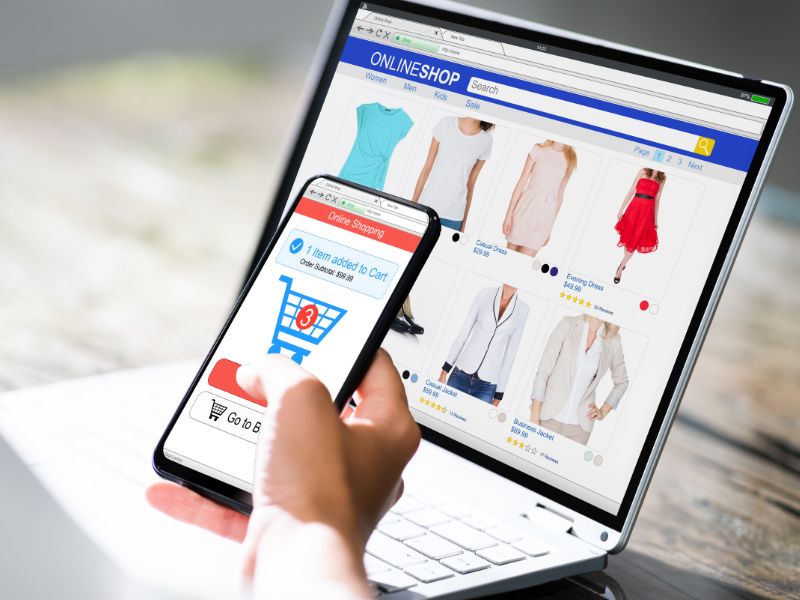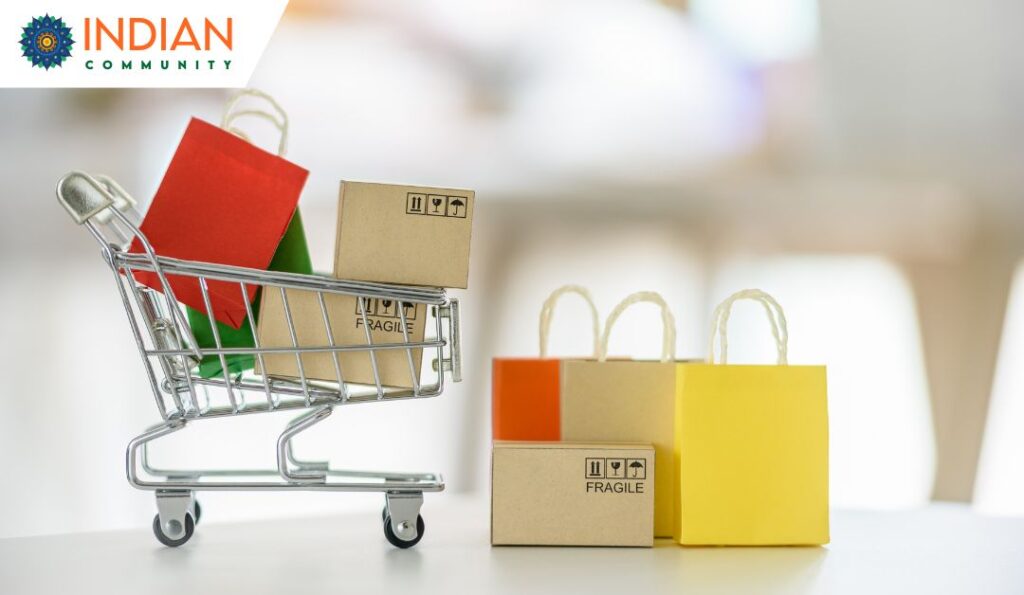The digital revolution has transformed how businesses operate, with e-commerce and online retail emerging as one of the most lucrative and accessible business models. From small startups to global giants, e-commerce has democratized access to markets, allowing entrepreneurs to reach consumers worldwide. This guide dives into the key aspects of starting an e-commerce business, trends driving its growth, and how to navigate the challenges for long-term success.

What is E-commerce?
E-commerce, or electronic commerce, refers to the buying and selling of goods or services over the internet. Unlike traditional brick-and-mortar retail, e-commerce allows businesses to operate without a physical storefront, significantly reducing overhead costs. Online retail is a subset of e-commerce, focusing specifically on selling physical products through digital platforms.
Why E-commerce is Booming
E-commerce has grown rapidly, thanks to a combination of technological advancements, changing consumer habits, and a global shift toward digital solutions. Here’s why e-commerce is thriving:
- Convenience: Consumers enjoy the ability to shop from anywhere, anytime. E-commerce platforms offer flexibility and ease of access that traditional retail cannot match.
- Global Reach: Online stores can cater to a global audience without the need for physical expansion, enabling businesses to tap into international markets.
- Lower Operating Costs: Without the need for physical stores, e-commerce businesses save on rent, utilities, and staffing, allowing for higher margins or competitive pricing.
- Personalization: Data analytics, AI, and machine learning have enabled e-commerce platforms to offer personalized shopping experiences, increasing customer satisfaction and loyalty.
- Scalability: E-commerce businesses can scale quickly and efficiently. Adding new products, expanding into new regions, or increasing inventory is much easier online than in a physical retail space.
Steps to Start an E-commerce Business
Starting an e-commerce business requires careful planning and execution. Here are the steps to get started:

1. Identify a Profitable Niche
Choosing the right niche is the foundation of a successful e-commerce business. A niche is a specific segment of the market that you cater to. Finding a niche allows you to target a specific audience and differentiate your business from competitors.
How to Find Your Niche:
- Research Market Trends: Use tools like Google Trends, SEMrush, and industry reports to identify growing markets and consumer demand.
- Solve a Problem: Focus on niches where consumers are seeking solutions to specific problems. Products that address pain points tend to have higher demand.
- Evaluate Competition: Study your competitors. If a niche is overcrowded, it might be difficult to penetrate. Look for underserved markets or opportunities to innovate.
Popular e-commerce niches include eco-friendly products, wellness and fitness, pet supplies, tech gadgets, and fashion accessories.

2. Choose Your E-commerce Platform
Your e-commerce platform is the backbone of your online store. There are several platforms available, each with its own strengths and features. Popular options include:
Shopify: Known for its ease of use, Shopify is a great platform for beginners and experienced sellers alike. It offers a variety of customizable templates and integrates with multiple payment gateways.
WooCommerce: A WordPress plugin, WooCommerce is ideal for those who want to build a store on an existing WordPress site. It’s highly customizable but requires more technical knowledge than Shopify.
BigCommerce: Known for scalability, BigCommerce is a solid choice for businesses looking to grow quickly. It offers robust SEO features and a variety of built-in tools.
Amazon, eBay, and Etsy: For businesses wanting to leverage existing marketplaces, these platforms provide access to a large customer base. However, they come with fees and stricter selling guidelines.
When choosing a platform, consider factors such as pricing, ease of use, customization options, and the availability of tools like inventory management and SEO optimization.
3. Source Your Products
Next, you’ll need to decide how to source the products you’ll sell. There are a few different methods:
- Manufacturing: You produce the products yourself, giving you full control over quality and production. However, manufacturing comes with higher upfront costs and logistics challenges.
- Wholesaling: Purchase products in bulk from manufacturers or distributors, then resell them at a markup. Wholesaling requires storage space and inventory management.
- Dropshipping: This method involves selling products without holding inventory. When a customer places an order, the product is shipped directly from the supplier. Dropshipping minimizes risk and reduces upfront costs but often comes with lower profit margins.
- Private Labeling: Source generic products from manufacturers and rebrand them as your own. This gives you control over branding while avoiding the complexities of manufacturing.
4. Set Up Payment and Shipping
To complete online transactions, you’ll need to integrate payment gateways and shipping solutions into your store.
Payment Gateways: Most e-commerce platforms offer integrations with payment processors such as PayPal, Stripe, and Square. Choose payment gateways that offer secure, seamless transactions and cater to your target market.
Shipping Options: Depending on your business model, you may handle shipping yourself or outsource it to a fulfillment provider like ShipBob or Amazon FBA. Ensure you provide customers with clear shipping rates, delivery times, and tracking information.
5. Develop a Marketing Strategy
Even the best e-commerce stores won’t succeed without an effective marketing strategy. Here’s how to drive traffic and boost sales:
SEO (Search Engine Optimization): Optimizing your website for search engines helps your store rank higher on Google, driving organic traffic. Focus on keyword research, content creation, and on-page SEO to improve visibility.
Social Media Marketing: Platforms like Instagram, Facebook, and Pinterest are powerful tools for promoting products and engaging with customers. Consider running paid ads, influencer collaborations, and interactive content to build your audience.
Email Marketing: Build an email list to stay in touch with customers and promote products through personalized newsletters, promotions, and product recommendations.
Content Marketing: Blogging, videos, and product guides can provide value to customers and improve SEO. Create content that educates, entertains, and informs your audience, building trust and authority.
Pay-Per-Click Advertising (PPC): Platforms like Google Ads and Facebook Ads allow you to run targeted ads to specific demographics. PPC can be an effective way to drive sales, especially for new e-commerce stores.

Key Trends Shaping E-commerce
Understanding the trends driving the e-commerce industry can help you stay ahead of the competition. Here are a few important trends:
Mobile Commerce (M-commerce): With mobile devices accounting for over 50% of all online traffic, optimizing your e-commerce site for mobile is crucial. Consider implementing responsive design, fast-loading pages, and mobile-friendly checkout processes.
Voice Search: As voice search becomes more popular through devices like Amazon Alexa and Google Assistant, optimizing your site for voice queries will be essential.
Artificial Intelligence (AI) and Personalization: AI tools like chatbots and recommendation engines are being used to provide personalized shopping experiences. Offering tailored product suggestions based on customer behavior can boost sales and improve user satisfaction.
Social Commerce: Social media platforms are integrating shopping features, allowing customers to buy products directly through apps like Instagram and Facebook. Using social commerce can drive sales while building your brand’s presence on social platforms.
Sustainability: Consumers are increasingly demanding eco-friendly products and practices. Incorporating sustainable packaging, ethical sourcing, and transparency into your business model can attract a growing segment of eco-conscious shoppers.
Challenges in E-commerce and How to Overcome Them
While e-commerce presents many opportunities, it also comes with challenges. Here’s how to address some common issues:
- Competition: The low barrier to entry in e-commerce means there’s a lot of competition. Differentiating your business through unique products, superior customer service, and branding is crucial.
- Cart Abandonment: High cart abandonment rates can affect your revenue. Optimize your checkout process by offering free shipping, multiple payment options, and a simple, user-friendly design.
- Customer Trust: Building trust online can be difficult. Display customer reviews, ensure your site is secure, and offer clear return policies to create a sense of reliability.
- Logistics and Fulfillment: As your business grows, managing inventory, shipping, and returns can become complex. Using third-party logistics (3PL) providers or fulfillment services can streamline operations and improve efficiency.
E-commerce and online retail offer a wealth of opportunities for aspiring entrepreneurs. With relatively low startup costs, a global customer base, and the flexibility to operate from anywhere, the potential for success is enormous. By carefully planning your niche, choosing the right platform, sourcing products efficiently, and implementing a solid marketing strategy, you can build a thriving e-commerce business that grows with time.
As the digital landscape continues to evolve, staying updated on the latest trends and consumer behaviors will be key to long-term success. Whether you’re starting a niche dropshipping store or building a full-fledged online retail empire, e-commerce is an exciting and rewarding field for today’s entrepreneurs.


